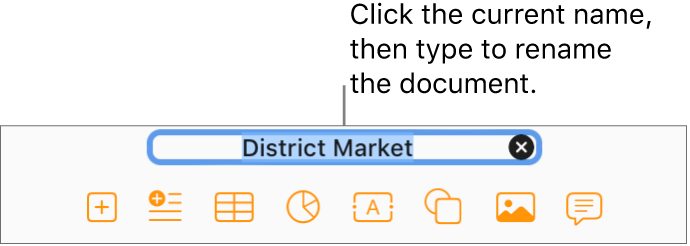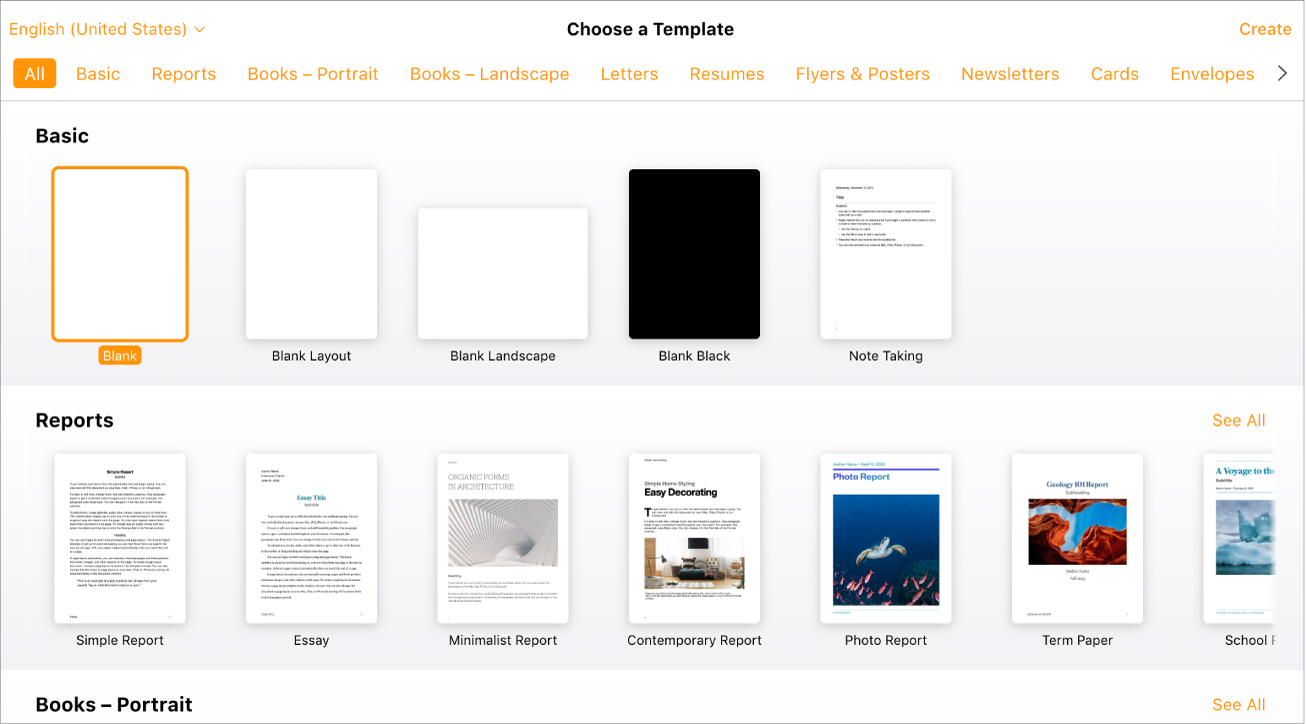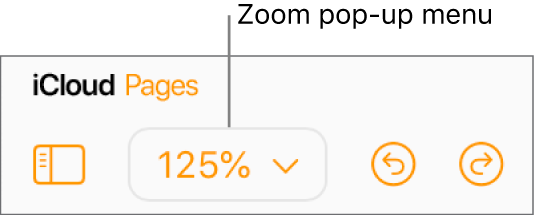
Create a document in Pages for iCloud
To create a new document, you first choose a template to use as a starting point. Templates use coordinated fonts and colors for a unified look, and often include placeholder elements that you can replace with your own content.
There are two types of templates, depending on the type of document you want to create:
Word-processing: For documents that are primarily text, such as reports and letters.
Page layout: For documents with a more customized layout, such as books, posters, and flyers.
To quickly create a word-processing or page layout document, see the first two tasks below. To create either type of document, but also learn how to format text, add images, and more, see the last topic below.
Create a basic word-processing document
In the document manager, click the Create Document button
 in the toolbar, then double-click the leftmost Blank template in the Basic category.
in the toolbar, then double-click the leftmost Blank template in the Basic category.Start typing your content.
New pages are added automatically as you reach the end of each page.
To name your document, click the current name, Blank, at the top of the document, type a new name, then press Return (on a Mac) or Enter (on a Windows computer).

Pages for iCloud automatically saves your document as you work, so you don’t need to worry about saving it manually. However, it’s a good idea to rename your document so you can easily find it the next time you want to work on it.
For more detailed information about editing, formatting, or adding other types of content to your document, see Create and format a document below.
Create a basic page layout document
In the document manager, click the Create Document button
 in the toolbar, then click the Blank Layout template in the Basic section.
in the toolbar, then click the Blank Layout template in the Basic section.Click the Text button
 in the toolbar to add a text box, then start typing.
in the toolbar to add a text box, then start typing.To adjust the location or size of the text box, do any of the following:
Move it: Click outside the text box to deselect the text, then drag the text box anywhere on the page.
Resize it: Click outside the text box to deselect the text, then click the text (or anywhere in the text box) to show the selection handles (blue dots around the text box). Drag a selection handle to resize the text box. If a clipping indicator
 appears at the bottom, you can also drag it until all of the text is visible.
appears at the bottom, you can also drag it until all of the text is visible.
To name your document, click the current name, Blank Layout, at the top of the document, type a new name, then press Return (on a Mac) or Enter (on a Windows computer).

Pages for iCloud automatically saves your document as you work, so you don’t need to worry about saving it manually. However, it’s a good idea to rename your document so you can easily find it the next time you want to work on it.
For more detailed information about editing, formatting, or adding other types of content to your document, see “Create and format a document” below.
Create and format a document
In the document manager, click the Create Document button
 in the toolbar.
in the toolbar.Note: If you’d like the ability to format table and chart data using the conventions of another language, choose a different language in the top-left corner before choosing a template in the next step. For more information, see Create a document with the formatting of a different language.
In the template chooser, browse the templates by category, then double-click the one that looks closest to what you want to create.
The choices include a variety of word-processing and page layout templates. To narrow the choices, click a category along the top.
Note: To create an interactive book, choose a template from one of the Books sections. When you export a book template in EPUB format, it can be opened in Apple Books and other ebook readers.

Do any of the following:
Add text: In a blank word-processing template (for example, Blank or Blank Landscape), just begin typing. The blinking insertion point indicates where your text starts. In a blank page layout template (for example, Blank Layout), click the Text button
 in the toolbar to add a text box, type your text, then drag to reposition the text box on the page, or use the selection handles to resize it.
in the toolbar to add a text box, type your text, then drag to reposition the text box on the page, or use the selection handles to resize it.Edit text: To replace placeholder text (text that comes with a template), click the text, then type. To edit text you added, select the text, then type to replace it.
Format text: Select the text you want to format, then in the Format
 sidebar on the right, click the Style button near the top and make your choices.
sidebar on the right, click the Style button near the top and make your choices.Replace images: Select the image you want to replace, click Image at the top of the Format
 sidebar, then click Replace. Browse to find a new image, then double-click it.
sidebar, then click Replace. Browse to find a new image, then double-click it.Add new text boxes, shapes, images, or other objects: Click an object button in the toolbar. See Intro to text boxes, images, and other objects.

Add or delete pages: In a word-processing document, new pages are automatically added to the end of the document as needed; however, you can also manually add a blank page. In a page layout document, click the Add Page button
 in the toolbar. To delete a page, see Delete pages.
in the toolbar. To delete a page, see Delete pages.Undo or redo a change: Click the Undo button
 or the Redo button
or the Redo button  in the toolbar.
in the toolbar.Enlarge (zoom in) or reduce (zoom out) your overall view of a document: Click the Zoom pop-up menu in the toolbar, then choose an option.

To name your document, click the current name at the top of the document, type a new name, then press Return (on a Mac) or Enter (on a Windows computer).

Pages for iCloud automatically saves your changes as you work, so you don’t need to worry about saving your document manually. However, it’s a good idea to rename your document so you can easily find it the next time you want to work on it.
To close the document, move the cursor over the document title in the browser tab (above the document), then click the X that appears on the left.